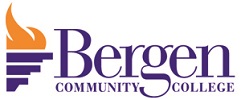Find your path to success with a diverse range of more than 120 degree, certificate, and continuing education programs.
What is SOTL?
Any professor can tell you that his or her work extends far beyond the classroom. Although the classroom remains the primary focus, a professor’s impact extends to his or her independent guidance with students, scholarly interests and research. This reality – the many facets of faculty work – remain the central idea behind the “Scholarship of Teaching and Learning” (SOTL), a unifying principle that seeks to engage faculty passionate about their profession.
According to the mission of the International Society for the Scholarship of Teaching & Learning, it promotes:
- Recognizing and encouraging scholarly work on teaching and learning in each discipline, within scholarly societies and across educational levels;
- Promoting cross-disciplinary conversations to create synergy and prompt new lines of inquiry;
- Facilitating the collaboration of scholars in different countries and the flow of new findings and applications across national boundaries;
- Encouraging the integration of discovery, learning, and public engagement, and;
- Advocating for support, review, recognition, and appropriate uses of the scholarship of teaching and learning.
In all, SOTL seeks to support scholarly efforts by faculty in research, development and teaching.
(Walter, K., (March, 2015), This Week at Bergen)
Why SOTL Matters?
- The Teacher-Scholar Award for Community College Chemistry Faculty. (n.d.). Retrieved February 16, 2016, fromhttp://www.acs.org/content/acs/en/funding-and-awards/awards/acs-local-section-awards/awards-santa-clara-valley/the-teacher-scholar-award-for-community-college-chemistry-faculty
- Kuh, G. D., Chen, D., & Laird, T. F. (fall 2007). Why Teacher-Scholars Matter: Some Insights from FSSE and NSSE. Liberal Education, 93(4). Retrieved February 16, 2016, fromhttps://aacu.org/publications-research/periodicals/why-teacher-scholars-matter-some-insights-fsse-and-nsse.
- Madden, F., Tinberg, H., Andelora, J., Gerald, S., Kim, M., Nadeau, J. Sommers, J. (2010). Research and Scholarship in the Two Year College (Rep.). Retrieved February 16, 2016, from Two-Year College English Association website:http://www2.bgsu.edu/departments/english/cconline/new_media_cc/Introduction/researchscholarship.pdf
How do you get started with SOTL projects?
- Chick, N. (n.d.). A Guide from the Vanderbilt University Center for Teaching. Retrieved February 16, 2016, fromhttps://my.vanderbilt.edu/sotl/doing-sotl/getting-started/
- O’Brien, M. (7-2008). Navigating the SoTL Landscape: A Compass, Map and Some Tools for Getting Started. International Journal for the Scholarship of Teaching and Learning, 2(2) Retrieved February 16, 2016, fromhttp://digitalcommons.georgiasouthern.edu/cgi/viewcontent.cgi?article=1109&context=ij-sotl
- Smith, K. L. (n.d.). Kinds of SoTL Projects. Retrieved February 16, 2016, fromhttp://www.fctl.ucf.edu/ResearchAndScholarship/SoTL/whatIsSOTL/kindsofprojects.php
- Lilly Conference Session Theme Tracks. Retrieved February 17, 2016, fromhttp://celt.miamioh.edu/lillycon/keywords.php?t=themetracks& .
Are there any discipline specific SOTL resources?
- Overton, T. (2015, May 27). Scholarship of teaching and learning, Education in Chemistry Blog, Royal Society of Chemistry.
- Wankat, P. C., et al. (2002). The scholarship of teaching and learning in engineering.” Disciplinary styles in the scholarship of teaching and learning: Exploring common ground, 217-237.
- Thomas, P. Y. (2011). Cloud computing: A potential paradigm for practising the scholarship of teaching and learning, The Electronic Library, 29(2), 214-224.
- Gurung, R., Regan, A. & Landrum, R. E. (2015). Scholarship of Teaching and Learning in Psychology, American Psychological Association.
Books/ Periodicals
Ambrose, S. A., et al. (2010). How Learning Works: Seven Research-Based Principles for Smart Teaching. San Francisco: Jossey Bass.
Anderson, L. W.,et al., (2001). A Taxonomy for Learning, Teaching, and Assessing: A Revision of Bloom’s Taxonomy of Educational Objectives. New York: Longman.
Bain, K. (2004). What the Best College Teachers Do. Cambridge: Harvard Univ. Press.
Boyer, E. L. (2015). Scholarship reconsidered: Priorities of the professoriate. John Wiley & Sons.
Bransford, J. D., Brown, A. L., & Cocking, R. R. (2000). How People Learn: Brain, Mind, Experience, and School. Washington, D.C.: National Academy Press.
Fink, D. L. (2003). Creating Significant Learning Experiences: An Integrated Approach to Designing College Courses. San Francisco: Jossey-Bass.
Gurung, R., Regan, A., & Wilson, J. H. (winter 2013). New Directions for Teaching and Learning, 2013(136), 1-111.
Huber, M.T. & Hutchings, P. (2015). The Advancement of Learning: Building the Teaching Commons. San Francisco: Jossey-Bass.
Huber, M.T. & Morreale, S.P., (2002) Disciplinary styles in the scholarship of teaching and learning: Exploring common ground. AAHE Publications.
Hutchings, P., Huber, M.T. & Ciccone, A., (2011), The scholarship of teaching and learning reconsidered: Institutional integration and impact. John Wiley & Sons.
Pace, D., & Middendorf, J. (2004). Decoding the Disciplines: Helping students learning disciplinary ways of thinking: New Direction for Teaching and Learning, 98.
Links to Online Journals
